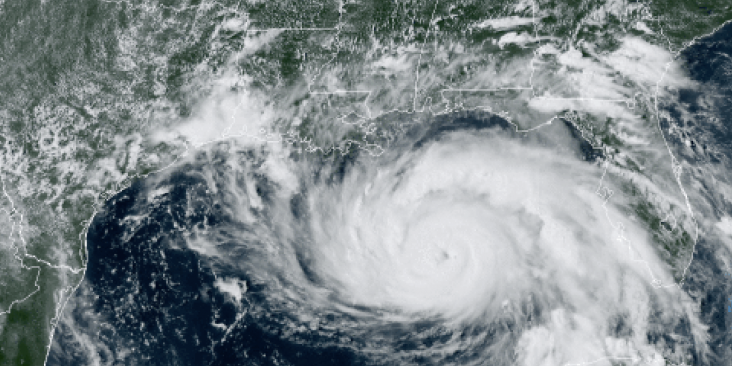Arkansas Delta farmers brace for remnants of Hurricane Ida as harvest looms
by August 30, 2021 1:01 pm 765 views

Hurricane Ida decimated the Louisiana coast Sunday (Aug. 29) before turning its wrath on the city of New Orleans, destroying property and leaving more than one million without power. Growers throughout the Mississippi Delta region, including those in the Arkansas Delta are watching as rain and winds from the now tropical storm move north.
Rain totals and wind gusts throughout the region will be variable, according to the National Weather Service, but producers are bracing for weather-related damage on the cusp of the harvest season. Rice and corn crops could be the most at risk from this storm system.
“With harvest getting started, rains and storms will delay that across crops,” Jarrod Hardke, extension rice agronomist for the University of Arkansas System Division of Agriculture, said. “In rice, there’s the potential for lodging and reduced grain quality in fields ready for harvest,” he said. Lodging occurs when winds or heavy rains flatten crops, making them difficult for harvesting equipment to pick up. Late-planted crops are at increased disease risk with added moisture and high humidity.”
Corn producers will be facing the same issues with the potential not only for lodging, and harvest loss but also grain quality, said Jason Kelley, extension wheat and feed grains agronomist for the Division of Agriculture.
“Grain sorghum growers would be worried about the grains sprouting in the seed head, especially if the rain lingers,” Kelley said.
Lodging is also a concern for soybean producers, said Jeremy Ross, extension soybean agronomist for the Division of Agriculture.
“We have more late planted soybean fields this year than normal, and many of these fields have several weeks before maturity. Once the soybeans are lodged and tangled, disease and insect concerns will increase,” he said. “There won’t be any air flow to help reduce disease pressure. Plus, it’s difficult to use fungicides and insecticides down into the canopy with lodged soybeans.”
“Another concern is seed quality with lodged soybeans,” he said. “Higher moisture and humidity in a lodged canopy could cause seed rot and sprouting.”
Cotton harvest is a little more than a month away, with only a few bolls open, said Bill Robertson, extension cotton agronomist.
“A little bit of rain won’t hurt. This is the time we are putting our last irrigation out,” he said. “A lot of farmers are holding off on that last irrigation in anticipation of this hurricane coming.”
However, “a lot of rain and a lot of wind is going to be bad,” Robertson said.
“Right now, the plants are top-heavy,” he said. “When we get the leaves all wet, it’s easy for a big windstorm to lay the cotton plants on the ground. Once the bolls hit the ground in dense canopy they are going to rot. This is what happened last year. We lost a lot to rot.”
“Sometimes the plants will stand back up some, but once the fruit hits the ground, it’s gone,” Robertson said.
Once the remnants of Ida pass through the region, dry sunny weather is predicted for the next several days. Officials say the weather will help farmers cope with whatever damage is brought by Ida.
